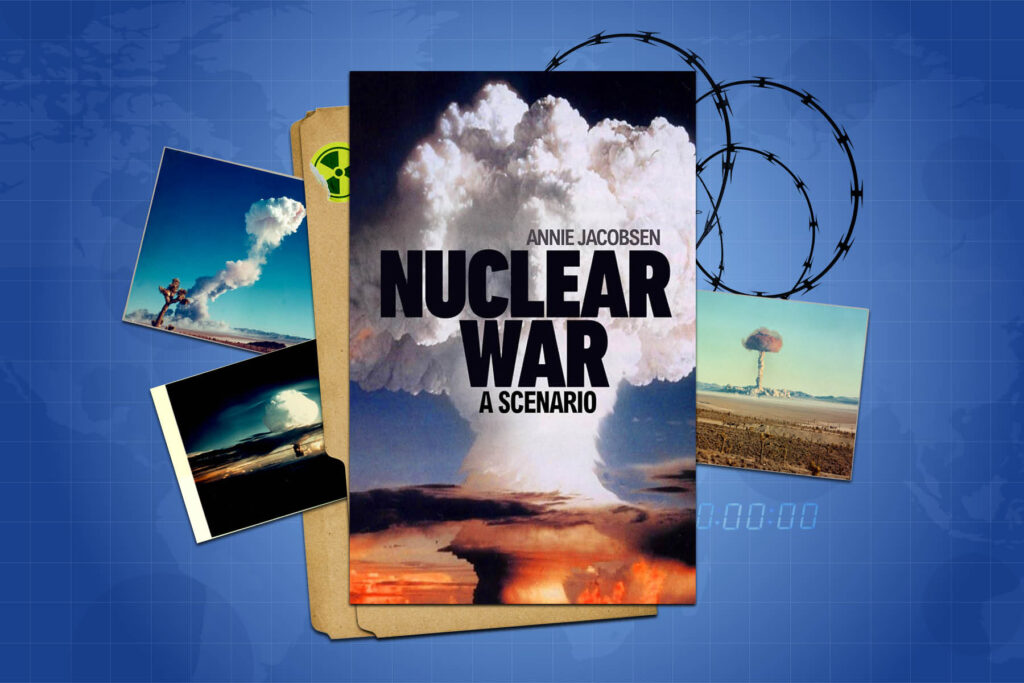- Home |
- Search Results |
- ‘Nuclear war happens in seconds and minutes, not days and weeks’: How I researched the end of the world
‘Nuclear war happens in seconds and minutes, not days and weeks’: How I researched the end of the world
In her own words, journalist and bestselling author Annie Jacobsen shares how she carried out research for her latest book, Nuclear War.

As an investigative reporter, I write about war, weapons, national security and government secrets. I’ve previously written six books about military and intelligence programs – involving the CIA, The Pentagon, DARPA – designed to prevent or deter a nuclear World War III. In the course of my work, countless people in the upper echelons of government have told me, proudly, how they have dedicated their lives and careers to making sure we never have a nuclear war. But what if we did? What if deterrence fails?
I put this question to dozens of military and civilian experts: to the people who’ve built the weapon systems, been privy to the response plans, and been responsible for advising the president of the United States on nuclear counterstrike decisions, should they have to be made. I worked with sources on the record, on background, and on deep background (as it’s known in the business), where a source takes you up to the razor’s edge of what can legally be known. This often involves sharing components and keywords about declassified elements of nuclear command and control – concepts that might otherwise have been impossible to know. What I learned shocked me, and my findings informed my new book, Nuclear War: A Scenario.
‘The world could end in a couple of hours’
I learned that ballistic missiles carrying nuclear weapons in their nosecones take roughly 30 minutes to get from one continent to another. They can’t be redirected or recalled.
Since the early 1950s, the U.S. government has spent trillions of dollars not only building up its colossal nuclear triad, but engineering early-warning systems to notify the Pentagon of an incoming nuclear attack. One of these satellite systems, called SBIRS (Space-Based Infrared System of satellites), can detect the hot rocket exhaust on an enemy ballistic missile less than one second after it launches. That’s right: in a fraction of a second. This is why my book is written in a ticking-clock format. Nuclear war happens in seconds and minutes, not days and weeks. Were a nuclear war to start, “the world could end in the next couple of hours,” General Robert Kehler, former commander of U.S. Strategic Command, told me.
'Ballistic missiles carrying nuclear weapons can't be redirected or recalled'
Were a nuclear weapon to strike America, even from a rogue nuclear-armed nation like North Korea, U.S. policy dictates a nuclear counterattack. This response would almost certainly set off a series of events that would quickly spiral out of control. This is because the U.S. maintains a nuclear launch policy called Launch on Warning. This means that if a military satellite indicates America is under nuclear attack, and a second early-warning radar confirms that information, the president will launch nuclear missiles in response – before any nuclear bomb strikes the U.S. Said differently, the U.S. doesn’t wait to absorb the nuclear blow. “Once we are warned of a nuclear attack, we prepare to launch. This is policy. We do not wait,” former U.S. Secretary of Defense William Perry told me.
‘We must reverse course’
Odd as this may seem, the U.S. president has sole authority to launch nuclear weapons. He asks permission of no one. Not the Secretary of Defense, not the chairman of the Joint Chief of Staff, not the U.S. Congress. These are just a few of the jaw-dropping realities of nuclear war.
Nuclear war is insane. Every source I interviewed knows this. Every one. It’s why so many people were willing to go on the record with me. We all live on the razor’s edge. Vladimir Putin recently said that he is “not bluffing” about the possibility of using weapons of mass destruction. North Korea has accused the U.S. of having “a sinister intention to provoke a nuclear war.” UN Secretary General António Guterres recently warned the world that, “Humanity is one misunderstanding, one miscalculation away from nuclear annihilation.” He later added, “This is madness. We must reverse course.”
'The nuclear war scenario proposed in my new book could happen tomorrow. Or later today.'
Nuclear war is the only scenario – other than an asteroid strike – that could end civilization in a matter of hours. The soot from burning cities and forests would blot out the sun and cause a nuclear winter. State-of-the-art climate modeling predicts five billion humans would die. In the words of Nikita Khrushchev, “the survivors [would] envy the dead.”
A nuclear strike on the Pentagon would be the beginning of a scenario, the finality of which would be the end of civilization as we know it. This is the reality of the world in which we all live, with multiple countries and world leaders just the click of a finger away from ending life on earth.
The nuclear war scenario proposed in my new book could happen tomorrow. Or later today. The fundamental idea behind the book is to demonstrate, in appalling detail, just how horrifying nuclear war would be. So, I hope you read the book and join the conversation – while we’re all still here to have it.
Nuclear War is out now.